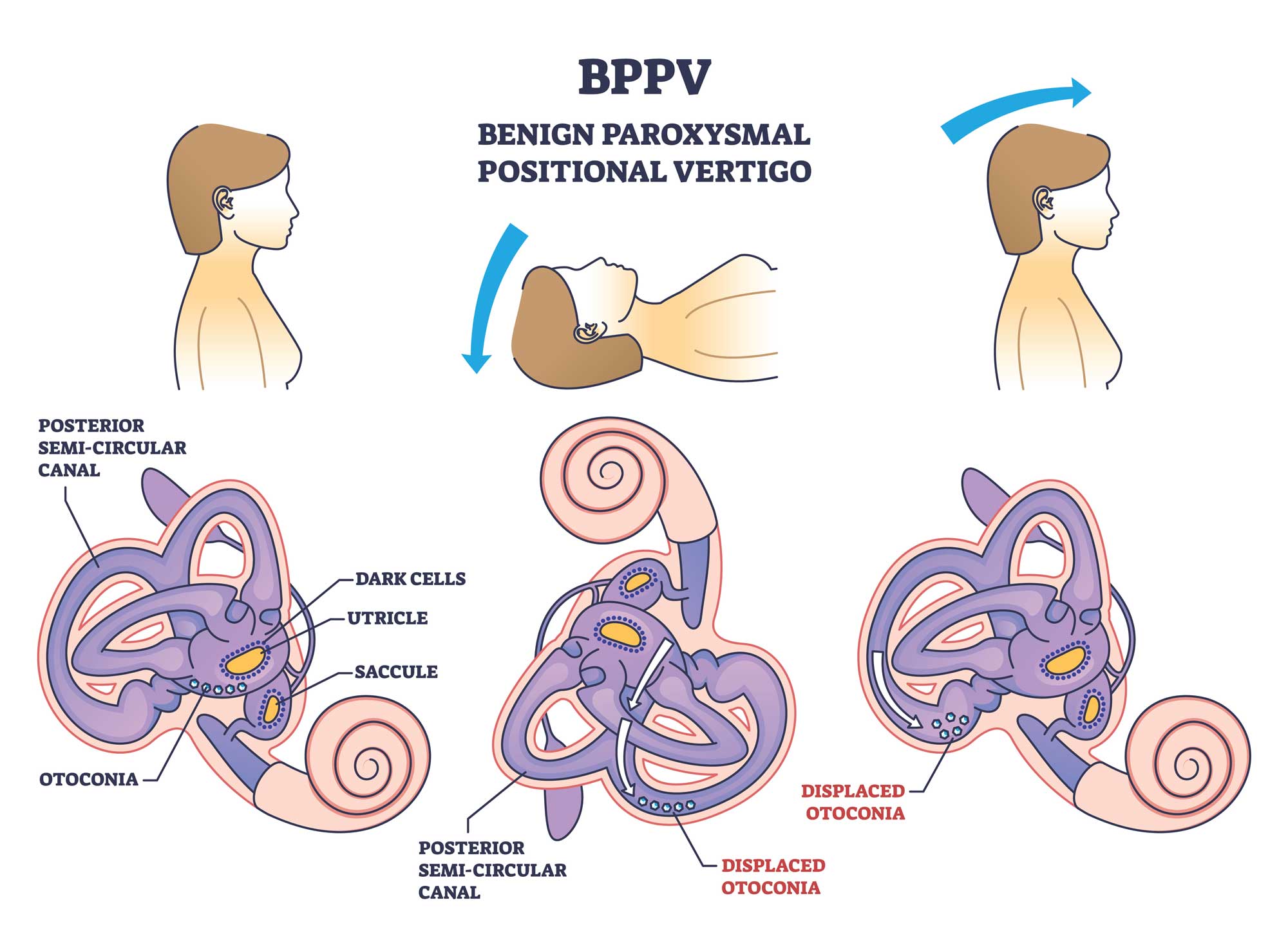Vertigo is a commonly experienced condition characterized by dizziness or a sense that the surroundings are spinning. It can cause a host of symptoms, such as nausea, vomiting, headache, ringing in the ears, and loss of balance. While it can be a severe condition, it is often treated best through chiropractic care. Chiropractic care has been proven to offer lasting relief for patients experiencing vertigo, and in this article, we’ll discuss what patients should expect from chiropractic treatment for vertigo.
The first thing patients must know is that chiropractors are not only experienced in treating neck and back pain but also offer care for whiplash, concussion, and vertigo.
What is Vertigo?
Vertigo can be an unpredictable and distressing condition that can make you feel like the world is spinning around you. It is a type of dizziness that makes it difficult to maintain balance, and it can affect various aspects of your life. Understanding its symptoms is the first step towards combatting it. In this blog post, we discuss the various symptoms associated with vertigo to help you identify the condition and seek treatment accordingly.

1. Balance Problems
One of the most common symptoms that people with vertigo experience is problems with balance. You may find it difficult to walk or stand up straight, as if you are swaying or being pulled in one direction. This symptom is usually caused by a disturbance in the inner ear, which is responsible for sensory information that helps maintain balance.
2. Nausea and Vomiting
Vertigo can also cause feelings of nausea and vomiting, particularly if it is severe. This can be due to the body’s inability to adjust to the conflicting signals that it is receiving from the eyes and ears. When your brain receives mixed signals of motion and orientation, it can trigger a feeling of motion sickness.
3. Ringing in the Ears
Another common but not widely known symptom of vertigo is a ringing sound in the ears, known as tinnitus. It arises from dysfunction in the inner ear’s delicate hair cells, which are responsible for transmitting sound signals to the brain. Vertigo can sometimes cause these hair cells to malfunction, which can result in a persistent ringing or buzzing sound.
4. Headaches
If you have vertigo, it is not unusual to experience headaches or migraines. These headaches may be caused by poor blood flow to the brain, which is a result of the body’s effort to re-establish balance. These headaches may be severe and persistent, requiring medication or other treatment methods to alleviate the pain.
5. Sweating and Paleness
Finally, people with vertigo might experience sweating and paleness of the skin, especially during an attack. This typically happens because your body is reacting to the stress of trying to deal with the conflicting orientation signals. When someone experiences an episode of vertigo, their body naturally enters into fight or flight mode, which can result in physical changes like sweating and paleness.
How Chiropractors Treat Vertigo
In treating vertigo, the chiropractor typically starts by performing a thorough exam to determine the cause, which is typically one of two things: an injury that occurred in the musculoskeletal system or improper blood flow to the brain.
The Epley Maneuver
Once the cause is identified, the chiropractor will recommend a treatment plan unique to the patient’s needs. The most common chiropractic technique used for vertigo is the Epley maneuver, which involves moving the head in specific positions to dislodge calcium crystals from the inner ear. The chiropractor will perform this maneuver in their office and may include massage, neck adjustments, and specific exercises to help ease the patient’s symptoms.
What is the Epley Maneuver?
The Epley maneuver is a simple and effective treatment option for vertigo. It involves moving the head and body in a specific sequence to dislodge particles in the inner ear that cause vertigo symptoms. The maneuver is named after Dr. John Epley, who developed it in 1980 as a treatment for a specific type of vertigo called benign paroxysmal positional vertigo (BPPV).
How Vertigo Sickness Occurs
BPPV occurs when small calcium crystals, called otoliths, become dislodged in the inner ear and travel into the semicircular canals. These canals are responsible for detecting changes in head position, which helps maintain balance. When otoliths enter these canals, they disrupt the normal signals sent to the brain about your head’s position, leading to vertigo symptoms.
How The Epley Maneuver Relieves Vertigo Sickness
During the Epley maneuver, your head is placed in a variety of positions to move the otoliths out of the semicircular canal and into an adjacent chamber where they no longer cause symptoms. The maneuver is typically performed in a doctor’s office, and treatment usually lasts for several minutes.
Successful Drug Free Treatment For Vertigo
The Epley maneuver is known to be effective for treating BPPV, with a success rate of around 90%. It can also help alleviate the symptoms of other types of vertigo, such as vestibular neuritis or labyrinthitis. However, it is worth noting that the Epley maneuver is not suitable for everyone, and some patients may require other forms of treatment.
Relief After Just One Session
Patients will often see improvements in their symptoms after a few sessions, with a complete correction requiring several weeks or months of treatment. During this time, the chiropractor may recommend specific lifestyle changes that would include proper nutrition, relaxation techniques, and exercises that help patients manage their vertigo symptoms.
Safe, Non-Invasive Treatment For Vertigo
It’s worth noting that chiropractic care is primarily concerned with the vertebral column and its impact on the nervous system. Chiropractic care is a non-invasive, drug-free treatment that is safe for patients of all ages. Unlike traditional therapies like medication or surgery, chiropractic treatment targets the underlying cause of vertigo.
Help For Vertigo
Vertigo can be a debilitating condition, but chiropractic care can provide lasting relief for patients seeking a drug-free, non-invasive option for treatment. Chiropractors take a whole-body approach to vertigo treatment, examining the cause of the symptoms before continually developing a personalized treatment plan for each of their patients.
While chiropractic care for vertigo may take some time to produce results, patients can rest assured that they will feel an improvement in their symptoms, leading to better health and overall well-being. If you or a loved one is experiencing vertigo, consider scheduling an appointment at one of our 3 convenient locations in Clearwater, St. Petersburg, and Brandon Florida.
